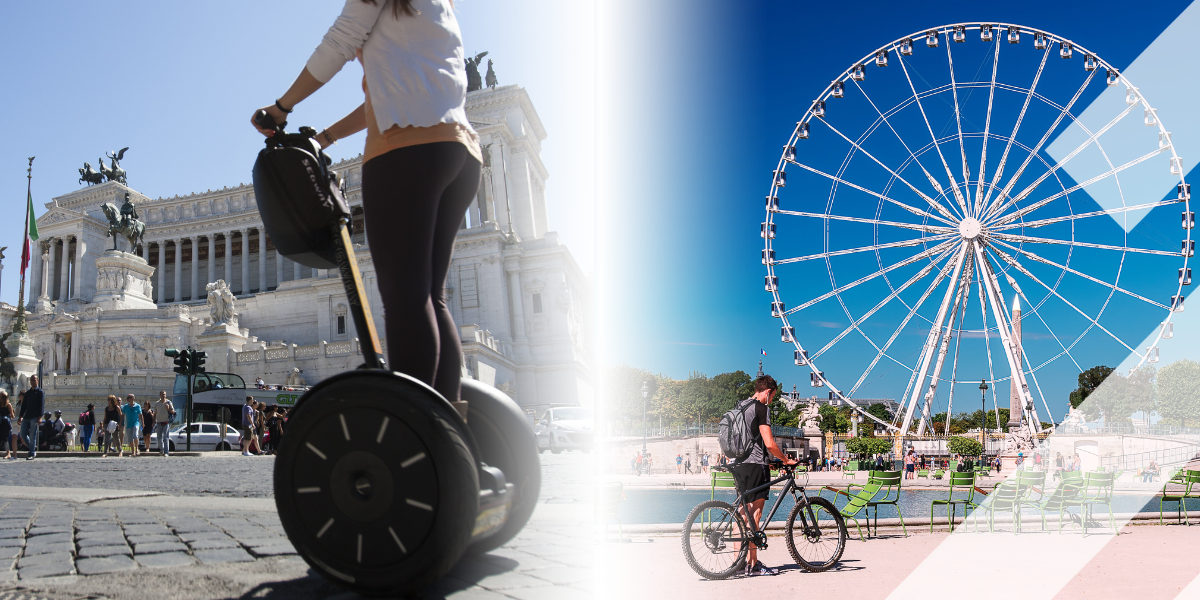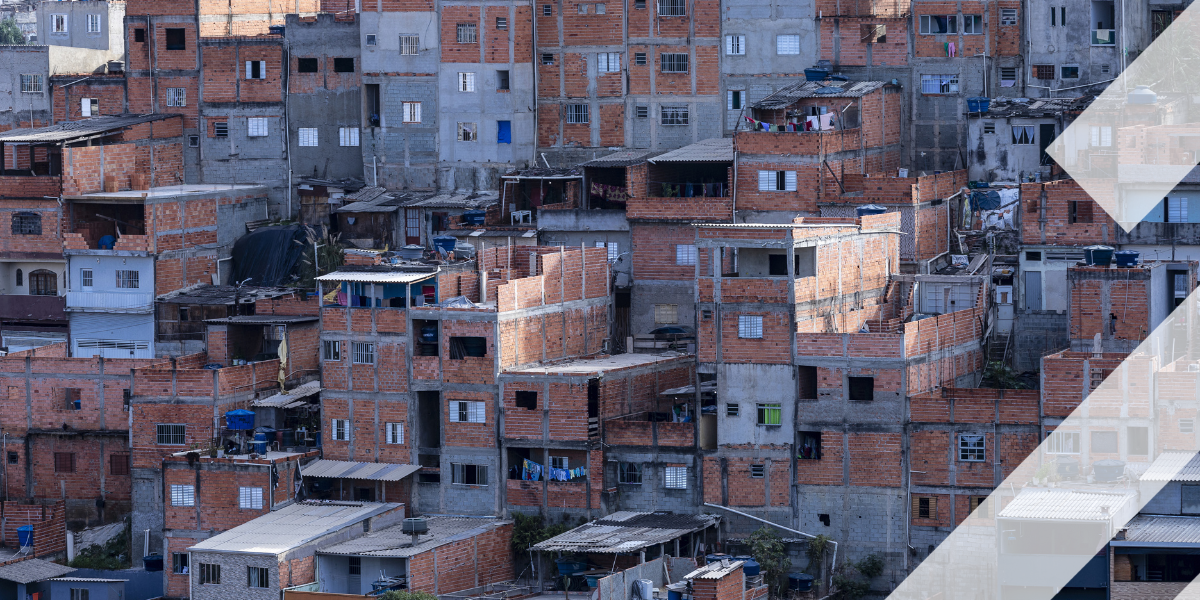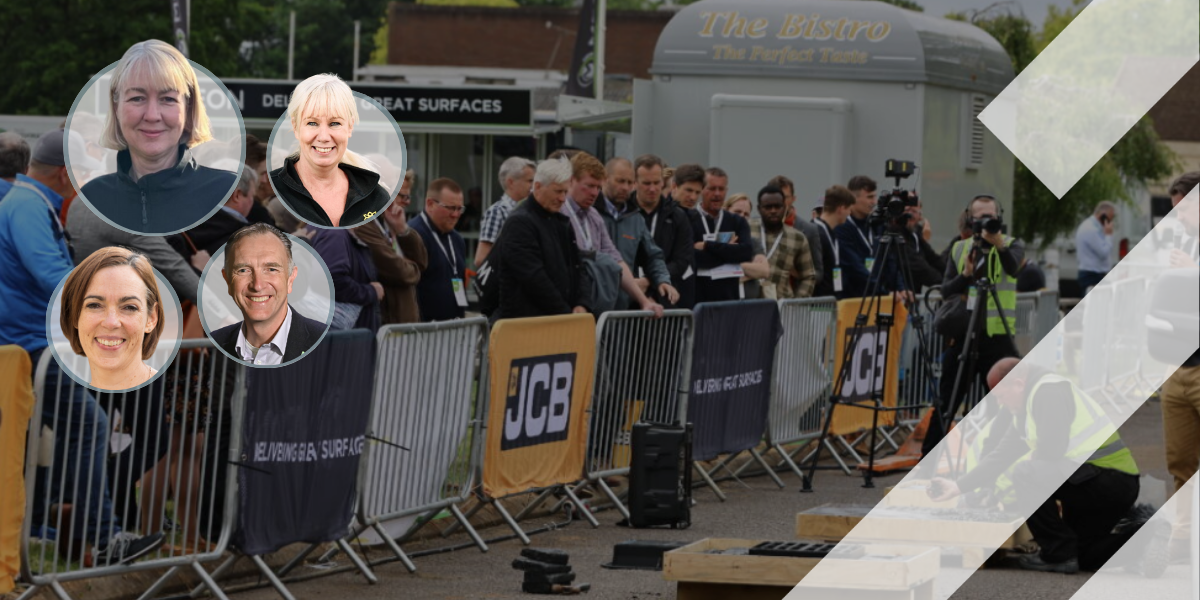In August Intertraffic spoke with Urban Robotics Foundation co-founder Bern Grush about the technical advancements in the autonomous vehicle sector that have led him and his colleagues to closely examine the topic of Robotaxi Orchestration.
Two months on and Grush is ready to launch Pudocity Inc, a company fully focused on the subject of autonomous vehicle pick-up and drop-off (hence “PUDO”) management technology. There’s more than a pressing need for this issue to be addressed, as he succinctly put it in the earlier article:
“The robotaxi industry's Achilles heel is not its sophisticated AI or sensors, but in its passengers’ experience when stopping for them to get in or out. Unlike human drivers who make dynamic, opportunistic decisions about where to stop, automated vehicles require reliable, reserved spaces. Without proper coordination, pickup and drop-off threaten worse chaos than cities have experienced in 125 years of kerb management.”
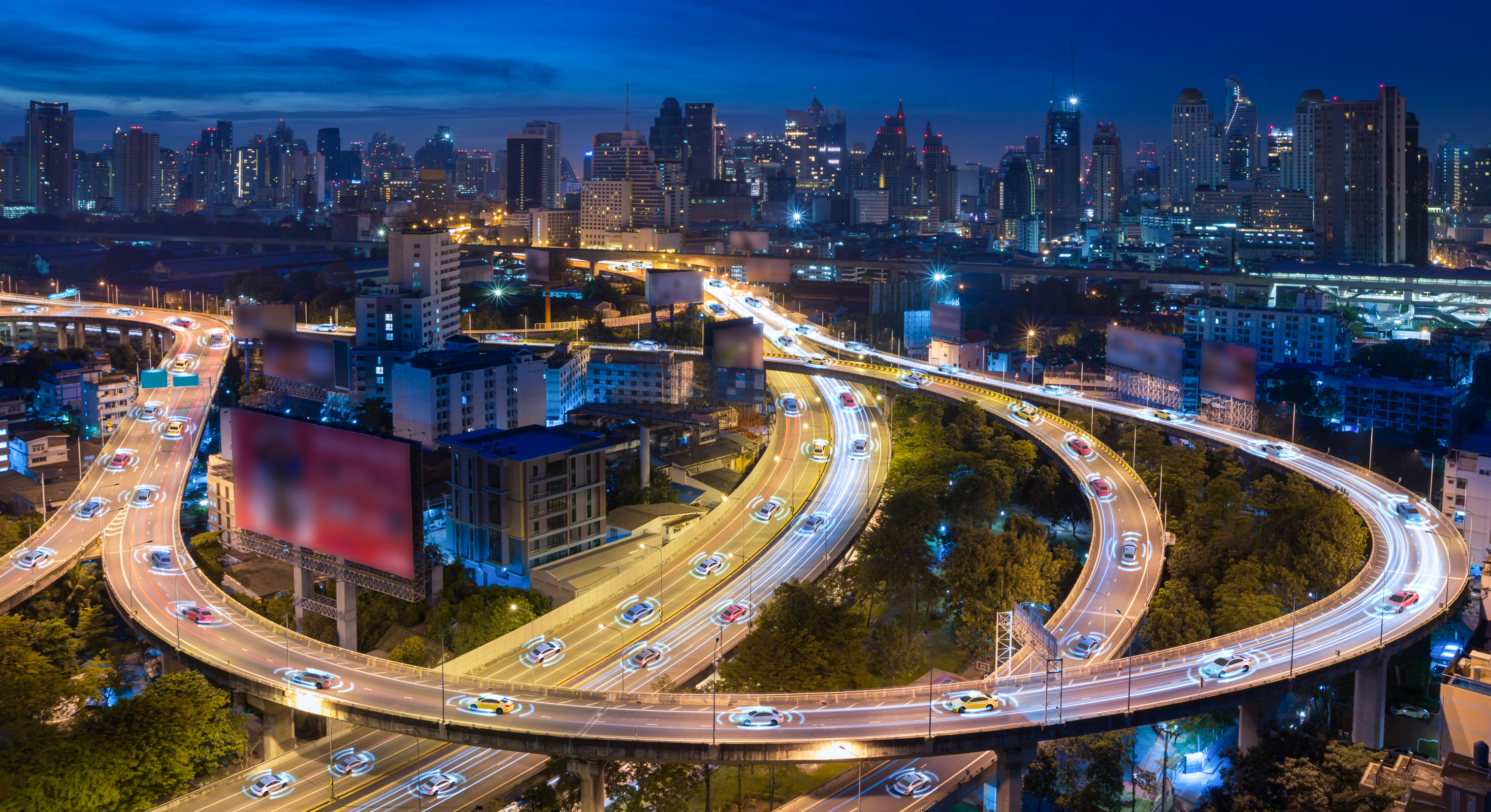
Robotaxi traffic on elevated urban expressways at night. (Credit: Suwin Puengsamrong / Dreamstime)
Intertraffic: What does the Pudocity system do?
Bern Grush: We orchestrate urban mobility; our tagline is “Robotaxi Orchestration.” Our initial focus and largest sector is robotaxis; Pudocity can orchestrate stopping location and schedule for any vehicle: shuttles, public transit, taxi, ride-hail, household vehicle, arial drone, boat (e.g., the autonomous water taxis in Amsterdam). “Stopping” may be momentary to pick up or drop off a passenger, but it may also be to charge a vehicle’s battery or to park for several hours.
Pudocity can orchestrate stopping location and schedule for any vehicle: shuttles, public transit, taxi, ride-hail, household vehicle, arial drone, autonomous Amsterdam water taxi…
Intertraffic: So how do you “orchestrate urban mobility?”
BG: Pudocity's "orchestration-as-a-service" is an intelligent orchestration system that optimizes the coordination of multiple automated vehicle fleets in a region. Our algorithms dynamically manage vehicle placement and scheduling reservations to minimize spatial conflicts at pickup and drop-off locations while reducing the total number of spaces required. By controlling arrival timing and optimizing geographic distribution, we eliminate congestion at these critical points and maximize revenue through demand-based pricing integrated into our placement and scheduling decisions.
Intertraffic: Can you explain the purpose of the Pudocity system?
BG: Vehicles searching and competing for parking spots create congestion as vehicles wait in the through lane, wait for a spot to clear, circle the block, discharge passengers or goods while standing in a traffic lane (double parking), stop in no-stop or transit spots, etc. Vehicles without human drivers to negotiate with other human-driven vehicles find this more difficult to manage, and this will add considerably to these existing conflicts. Pudocity prevents robotaxis from multiple companies from hunting and competing for the same spots for pickup and drop-off. It also prevents competition for the same spots between passenger vehicles, public transportation vehicles, and goods vehicles. Without orchestration, this will grow in confusion and congestion as increasing numbers of automated vehicles need to use city curbs. This will not only become worse for these new forms of automotive mobility, but it will be much worse for existing human-driven vehicles, as well.
Our algorithms dynamically manage vehicle placement and scheduling reservations to minimize spatial conflicts at pickup and drop-off locations while reducing the total number of spaces required
Intertraffic: Why not just have the robotaxi companies handle this?
BG: This is for all automated ground vehicles: robotaxis, public transportation, logistics companies, service vehicles, emergency vehicles, and private owners of AVs. It would be a conflict of interest for any one of the transportation companies or any one of the robotaxi companies to do this.
Intertraffic: Why should automated vehicle PUDO orchestration be controlled by a Traffic Authority?
BG: Vehicle operators, whether public, commercial, or private, need a common, reliable way to understand what spots are available, which they can use, and which they can reserve so they are not circling, competing, double parking, etc. Only a Traffic Authority that can manage and monetize such a system can achieve the required result. Consider the analogy to air traffic control as it manages a runway. This could never be done by letting the airlines or pilots negotiate among themselves.
Consider the analogy to air traffic control as it manages a runway. This could never be done by letting the airlines or pilots negotiate among themselves.
Intertraffic: Are ride-hailing companies with human drivers included?
BG: You can. But human drivers tend not to follow instructions if there is an opportunity to gain an advantage, or “cut corners.” Including human-operated vehicles would likely require more enforcement, more sensing infrastructure (cameras in high-infraction places), and hefty citations. Fleet operators with automated vehicles are far more likely to comply with an orchestration system.
Intertraffic: How do vehicles know where to stop?
BG: The Pudocity orchestration system provides a scheduled reservation at a specific GNSS location to the fleet operator who made the request. Each vehicle is given that information via its fleet operator (e.g., an operator of a robotaxi, public transportation, logistics fleet, or private vehicle). The workflow is: The fleet operator (vehicle operator) asks for a PUDO location, Pudocity provide an optimal location according to the specifications of the fleet operator’s request and various current circumstances. The fleet operator directs its vehicle to the assigned PUDO spot and time.
There are several negotiation, monetization, enforcement, and flexible, real-time modification capabilities as with any traffic orchestration system.
The fleet operator (vehicle operator) asks for a PUDO location, Pudocity provide an optimal location according to the specifications of the fleet operator’s request and various current circumstances. The fleet operator directs its vehicle to the assigned PUDO spot and time.
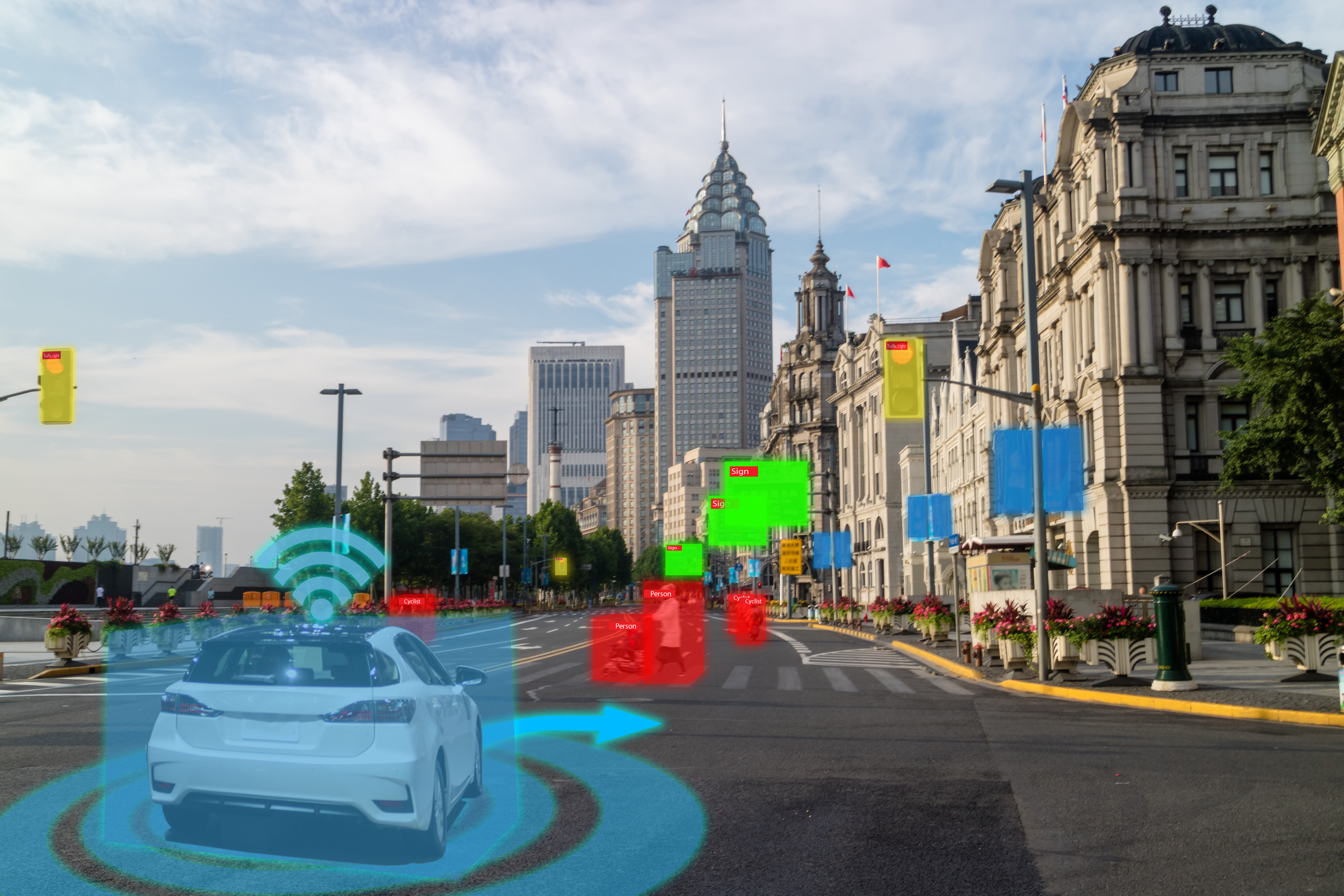
Perception and decision-making for autonomous vehicles in mixed urban traffic. (Credit: Ekkasit919 / Dreamstime)
Intertraffic: What happens if someone parks a vehicle that blocks a PUDO reservation location?
BG: The vehicle operator holding the reservation for the location in question reports to the Pudocity system that the assigned location is “unusable.” This can then be reported [optional] to the appropriate enforcement capability as determined by the Traffic Authority. It is then possible to have remote parking citation services through license plate recognition, have selective on-site enforcement since Pudocity can report the current local demand to decide whether to report, or do nothing. In all cases, the vehicle operator is given an alternate location. Such reassignment happens in real time and can be done so that the passenger (if any) is unaware of the delay.
Intertraffic: How will cities determine how many PUDO spaces they need?
BG: We help them determine this. You will start with one or two spaces in each of the locations you expect to experience more than one robotaxi at a time. If you expect several, you can consider three or four spaces. In the case of a large venue, say a sports stadium or an airport, you may need a considerably larger number.
According to the experience in each of these locations, our reports will tell you whether you have too few or too many spaces. While we use several optimization techniques to distribute vehicle arrivals appropriately, this can become more difficult at peak times in large or busy venues. If a local group of spaces never fills up, you could decrease the space count to maximize per-space revenue. In those places where there would never be conflict, you might consider having no spaces, as the Pudocity system can detect the absence of reservable spaces and send a message indicating that the vehicle can search for a space when it gets there.
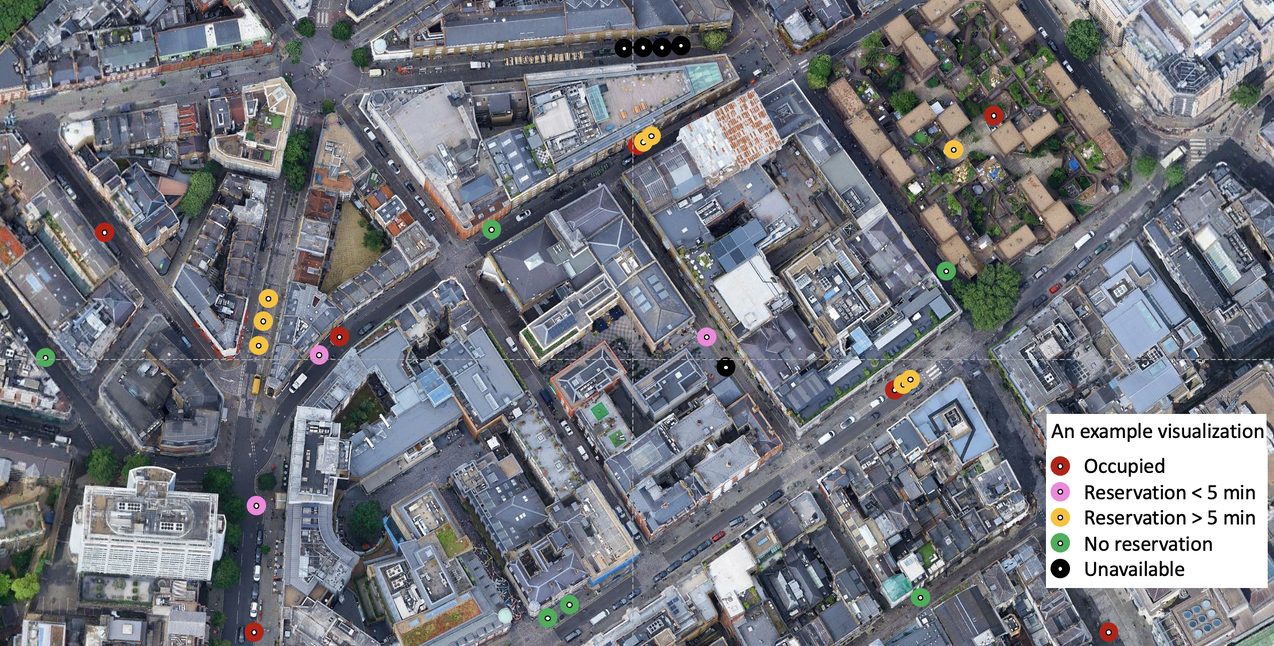
Example curbspace reservation visualization by Pudocity Inc. (Original image Google)
Intertraffic: In 2025 every project has to declare its impact on sustainability. How does Pudocity do that?
BG: Pudocity has a large but indirect impact on environmental sustainability. We do that by minimizing search times for a stopping place, local pockets of congestion-conflicts by spacing out arrivals, ending blocking of traffic lanes for pickup or drop-off, and assuring there is a reserved charger spot when battery replenishment.
Since optimized robotaxis have environmental advantages over human-driven vehicles operating under spatial uncertainty, anything that makes the robotaxi experience more effective means more people will shift to their use
Avoiding congestion and “circling for a place” means all traffic (ICE as well as BEV robotaxis) moves more efficiently, therefore producing fewer emissions. Since optimized robotaxis have environmental advantages over human-driven vehicles operating under spatial uncertainty, anything that makes the robotaxi experience more effective means more people will shift to their use, which has a positive environmental impact, as long as they're shifting away from human-driven vehicles, especially ICE vehicles.
